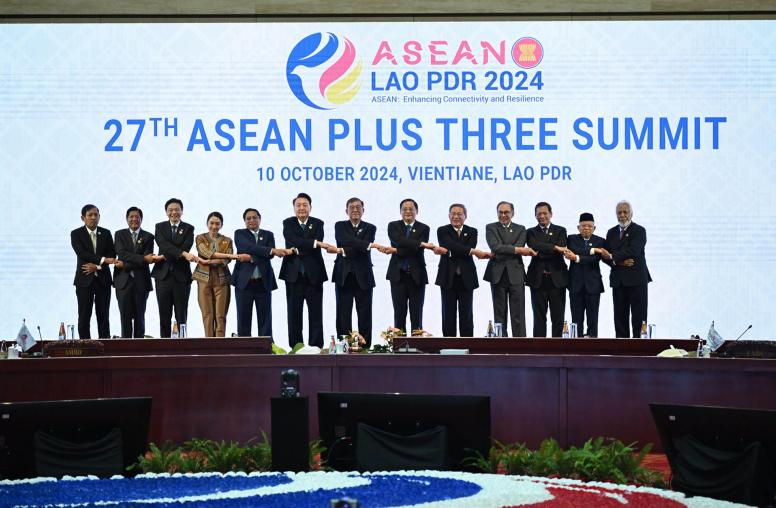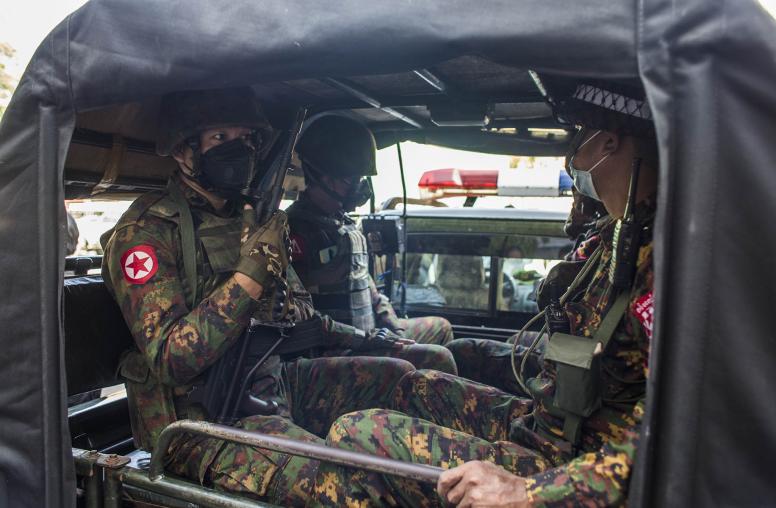Communal Violence in Burma
Priscilla Clapp, former U.S. chief of mission in Burma and USIP adviser, discusses the recent flare-up of violence in Burma, where at least 80 people have been killed since sectarian violence broke out last month.

As of June 26, at least 80 people have been killed since sectarian violence broke out last month in Burma, a country taking gradual steps toward democracy.
Priscilla Clapp, former U.S. chief of mission in Burma, discusses the recent flare-up of violence, whether it poses a threat to the country's democratization process and what the international community can do about the problem. A USIP adviser, Clapp is also the author of two USIP Special Reports on Burma, "Building Democracy in Burma," published in July 2007, and "Burma's Long Road to Democracy," published in November 2007.
USIP is engaged with the Asia Society and Blue Moon Fund in a Track II dialogue with Burma's first think tank, the Myanmar Development Resource Institute, in efforts to provide expertise and resources for economic, legal and political reform.
What is the background to the recent outbreak of communal violence in Burma's Rakhine state?
Concentrated almost exclusively in the townships of Maungdaw and Buthidaung in the northern corner of the Rakhine state on the Bangladesh border, the Rohingya are a subset of a larger Muslim population that extends throughout Burma. The ethno-religious tensions between Rohingya Muslims and Buddhists in Burma's Rakhine state have a long history, dating back more than 100 years. Without going into all the details of this history, suffice it to say that this is not the first flare-up between them.
A little more than 20 years ago, there was a serious outbreak of violence involving Burma security forces that sent more than 250,000 Rohingya across the border into Bangladesh.
The U.N. High Commissioner for Refugees (UNHCR) stepped in and reached agreement with the Burmese government to repatriate most of them and UNHCR has remained in the area to provide resettlement services and act as an international buffer between them and a hostile environment. During this period, Burma's previous military regime also relocated Buddhist families from other parts of the country to new villages in the same area to ensure that it would not become exclusively Rohingya.
What caused the most recent outbreak of violence last month?
The immediate cause of the recent violence was the report of a rape/murder in the official Burmese press that cast it as an attack of Muslim (Rohingya) men on a Buddhist girl. In retaliation, a group of Rakhine Buddhist youth lynched a busload of Muslim tourists, bludgeoning several of them to death. In response, the Rohingya living in the Rakhine towns of Maungdaw and Buthidaung went on a rampage against a number of villages in the area inhabited by Buddhists, killing many of the residents and burning their houses. Retaliatory violence continues to break out on both sides, despite the dispatch of large numbers of army and police security forces to the area by the central government in Naypyidaw, the country's capital.
The larger causes of the violence, however, lie in the deep-seated animosity toward the Rohingya by Rakhine Buddhists and the wider Buddhist population in Burma. Most Burmese Buddhists, including the government, consider the Rohingya to be illegal immigrants from Bangladesh, despite their long-term residence in the northern Rakhine state. As a consequence, they have not been given citizenship by post-colonial governments and have been severely restricted to the area of Maungdaw and Buthidaung, heavily policed by security forces, and constrained in their ability to engage in economic activity, so they remain, for the large part, desperately poor and understandably resentful.
This latest outbreak of violence has also been severely exacerbated by the burgeoning use of the Internet and social media. While the government has moved to constrain the print media's reporting about the violence, the electronic media are crackling with intemperate and venomous language, particularly by Buddhist Burmese residents, which fans the flames of further violence. Even some officials in Naypyidaw appear to have let their personal animosity toward the Rohingya spill out on Facebook and blogs; even democratic groups have joined the chorus. It is quite certain, therefore, that the government security forces charged with quelling the violence in the Rakhine state are not immune to these sentiments.
Does this violence threaten the democratic reforms underway?
Yes, because this is a serious outbreak of communal violence that seems to continue feeding on itself in spite of security measures taken by the government. In fact, the government's ability to resolve the underlying tensions is clearly limited by the deep prejudices against the Rohingya that pervade the country's Buddhist population, including the government itself. Initial reports of the rape and murder of the Buddhist girl appear to have contributed significantly to the retaliation against the busload of Muslim tourists. Therefore, the government will be hard-pressed to marshal the resources to tackle this problem dispassionately and fairly, and may find itself increasingly forced to fall back on draconian security measures that will inflame international opinion, potentially discrediting the reform process. And it will inevitably strengthen the conservative voices in the government.
Can the international community help?
The international community could play a critical role here, because the plight of the stateless Rohingya has already become a regional problem, with Rohingya refugees fleeing to neighboring countries, particularly Bangladesh, Malaysia, Thailand and Indonesia. This a problem ready-made for U.N. mediation; Burma's government would be well-advised to invite the assistance of the U.N. immediately. In the end, it will require an international solution to guarantee the Rohingya safe space in which to live and prosper.



